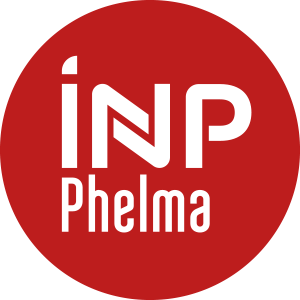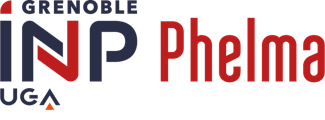Number of hours
- Lectures 0
- Projects 0
- Tutorials 0
- Internship 0
- Laboratory works 16.0
- Written tests 0
ECTS
ECTS 1.5
Goal(s)
The objective of the design study on the normal operation of a Pressurized Water Reactor using the SIREP simulator is to:
• Understand operating procedures from cold shutdown to hot shutdown (155 bars, 297°C) using the P/T diagram, before reactor startup.
• Justify how primary temperature and pressure are controlled depending on P/T conditions.
• Understand the behavior of a subcritical core in the presence of neutron sources.
• Grasp the principle of the subcritical approach (without reactivity information) while avoiding unintended criticality.
• Understand the behavior of a diverged core, whether supercritical or subcritical, at "zero power", i.e., below the nuclear heating threshold (commonly but improperly referred to as the "Doppler threshold").
• Understand and model the behavior of the diverged core "at power" (beyond the nuclear heating threshold, as soon as heating is observed).
• Grasp the importance of thermal feedback effects for reactor safety.
• Understand zero-power physics tests performed during startup to measure certain core neutronic characteristics and compare them with those calculated during core reload safety evaluations.
• Illustrate the moderator effect through a partial realization of one of the startup physics tests: measurement of the isothermal temperature coefficient (?_iso) and its evolution as a function of boron concentration.
• Understand the primary–secondary loop interaction, explaining how a PWR is operated and why a secondary-side incident can lead to a reactivity accident.
• Understand and model the "at power" core behavior before and after grid connection.
• Once connected, understand turbine-following operation, the "natural" core behavior (without control rod movement), and the concept of load-following mode.
• Understand the temperature control program Tm & Tv = f(%Pn) and the benefit of regulating the average primary temperature using control rods (R group).
• Understand the origin of various reactivity effects and how they are controlled during load-following operations (boron/control rod distribution).
• Understand the origin of operational limits to be respected: those directly linked to the power–?Pax relationship (pilot diagram), and those linked to "core margins": "low REC" and "linear overpower".
• Understand the limits of the boron dilution system as the cycle progresses, and how cycle extension is handled when the CB becomes too low.
• Finally, be able to summarize the advantages and disadvantages of the two main reactivity control methods (boron/control rods).
Content(s)
• First session (4 hours):
Chapter 1 – Progression on the P/T diagram before reactor startup
• Second session (4 hours):
Chapter 2 – Subcritical approach and startup
Chapter 3 – Identifying the nuclear heating threshold
• Third session (4 hours):
Chapter 4 – Zero-power physics tests
Chapter 5 – Unit startup and grid connection (Part 1)
• Fourth session (4 hours):
Chapter 5 – Unit startup and grid connection (Part 2)
Chapter 6 – Power operation and load-following
This course is taught in English/French. A visit to an EDF-operated nuclear power plant is scheduled at the end of the course.
Prerequisites
• Operation of Pressurized Water Reactors (PWR): basic principles and main systems
• Reactor kinetics and dynamics
• Reactor physics and neutron transport
• Single-phase and two-phase thermohydraulics
evaluation is based on
written preparation (Prepa)
final Report (CR)describing
the evolution of key parameters during simulated transients
simple modeling of those transients demonstrating the understanding of the most important phenomena
Only the final report could be redone.
Course unavailable distantly
30% * [CC Prepa]
70% * [Projet pour SIREP]
[1] Nordine Kerkar et Philippe Paulin « Exploitation des coeurs REP » - Collection Génie atomique INSTN/EDP-Sciences



